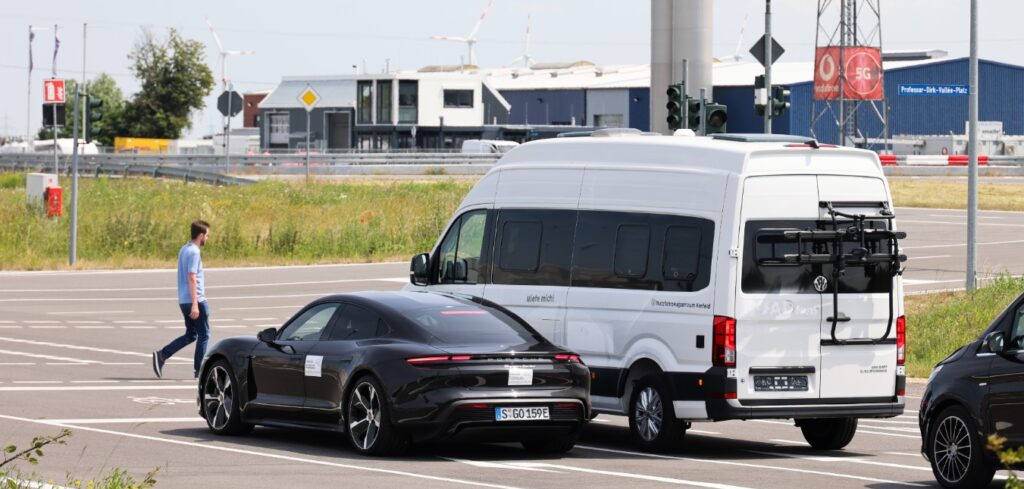Here Technologies, Vodafone and Porsche are working together on a study to improve road safety with the help of 5G technology and precise, real-time identification and localization of hazardous traffic situations.
The three companies are collaborating on the development of a real-time warning system so that vehicles and their drivers can receive hazard warnings directly, without any delay, enabling them to respond almost immediately. At the Vodafone 5G Mobility Lab in Aldenhoven, the partners are testing the real-time warning system under conditions similar to everyday situations.
The focus of the study is on hazardous situations that are not visible or are difficult to see for vehicle drivers, such as when their view is blocked by the traffic ahead. Using camera and sensor systems, artificial intelligence and precise localization with high-definition mapping and positioning technology, the data is processed and evaluated directly on the roadside and on the edge of the network through multi-access edge computing (MEC). Via dedicated alerts using 5G mobile network technology and an intelligent MQTT message broker, the data can then be transmitted without delay to road users traveling toward the hazard.
To detect dangerous situations ahead, the Live Sense SDK from Here Technologies is used alongside HD maps and positioning technology. Integrated into consumer devices with front-facing cameras, this system uses computer vision and artificial intelligence to identify objects and changes in the behavior of other road users or road conditions that could lead to hazardous situations. Based on this information, Live Sense SDK generates real-time hazard warnings for drivers.
“Improving road safety is a key focus for us. Location technology combined with 5G and multi-access edge computing enables powerful solutions that make roads safer, providing better mobility experiences for road users,” said Antina Lee from the product innovation team at Here Technologies.
The group notes that currently, in many cases, data processing takes place in centralized cloud computing centers. With multi-access edge computing (MEC), the computing power moves closer to the end user. As a result of 5G mobile network technology, there is said to be no delay when it comes to actual data transmission. This means that hazard warnings are delivered to the road user in real time with a latency of less than 10ms. In addition, data that was previously processed within the vehicle will be processed outside the vehicle in the future.
“If cars warn each other about hazards in real time, human lives can be saved,” said Michael Reinartz, director of innovation at Vodafone Germany. “5G and data processing on the roadside help to transmit hazard warnings without delay and make road traffic even safer. We are currently trialling this under everyday conditions.”
Following the initial tests in Aldenhoven, the companies plan to further optimize the real-time warning system and evaluate its potential in everyday use. Additional tests will be performed at different locations under a variety of conditions.


